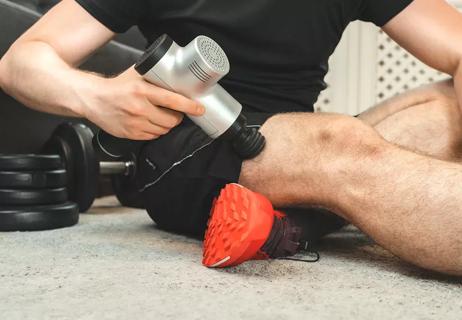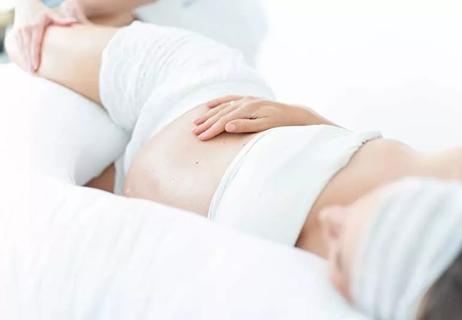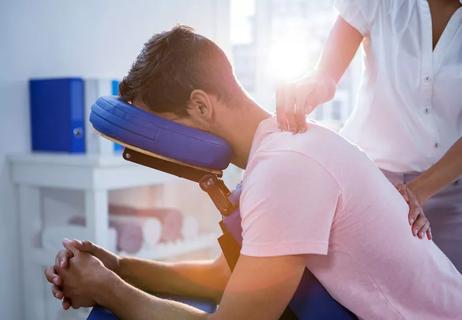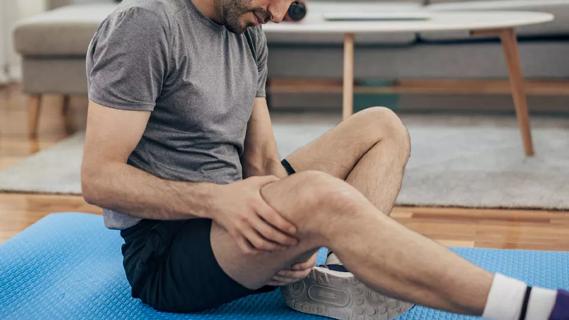Foam tubes and rubber balls can help when you hurt

If you’d give anything right now for a massage — it’s time to get some (low-cost) muscle relief.
Advertisement
Cleveland Clinic is a non-profit academic medical center. Advertising on our site helps support our mission. We do not endorse non-Cleveland Clinic products or services. Policy
Chiropractor Chad Adams, DC, shares his go-to massage tools and tips on how to use them. Try these simple tools to release muscle knots.
A word of warning: If you’re shopping online for massage tools, you can quickly fall down a rabbit hole of weird-looking gadgets in every shape and size. Do you need a solar-powered massager? Or one that heats up? Or one that diffuses essential oils?
Low-tech massage tools can be surprisingly effective, Dr. Adams says. “I’m a big believer in these simple tools.”
You may be surprised at how minimalist a roller is. It’s a simple tube-shaped cylinder made of dense foam.
But simple can be amazingly effective. Rollers can relieve back pain in your trigger points (those muscle knots, kinks and areas of extreme tightness).
Learn how to roll with it:
Advertisement
Foam rollers are great for back pain, but you’d have to be some kind of contortionist to position it correctly around the neck and shoulders. For those areas, grab a rubber lacrosse ball.
Then, follow the same steps you’d use for a foam roller. If you can’t reach the knots by lying on the floor, try standing along a wall and leaning back against the ball. “Sometimes a little creativity is required to get to the hard-to-reach places,” Dr. Adams says.
Foam rolling also offers a number of benefits for the lower body. It can help make your range of motion better, improve blood flow and body temperature, and get you physiologically prepared for more intense physical activities.
When rolling these areas, start by lying on top of your foam roller with your elbows out in front of you. As you roll, keep in mind that the basic premise is to start higher up on the muscles and work your way down. Stay at the top of the section for a few seconds, then gradually move down, spending a few seconds in each section as you continue to move down the muscle group. You should be able to work down each muscle group about three to five times within a minute. If you find any tender areas, try to stay on them for a little bit to work out the tightness.
The hip flexors are a little bit higher up than the quadriceps. When you’re working in this area, avoid rolling over any bony prominences. And make sure you’re rolling below the hip bone and working your way to right above the knee.
The Iliotibial bands (IT bands) are long strips of connective tissue that run along the outsides of the legs. They extend from the hip and run from the outer thigh down to the shinbone. While a lot of people might suggest rolling out the IT bands, it might not be the right solution for you. Using a foam roller on the IT band can be very uncomfortable or even painful. So instead of focusing on this area, work on any tightness that you might be experiencing in your hips or legs.
The hamstring muscle group is made up of a group of three muscles in the back of the thigh that go from just underneath the buttock to below the knee. When rolling in this area, you can start right below the bone in the buttock. Avoid rolling on top of the bone because it can be uncomfortable as you have important structures there that can be pain generating. As you roll, work your way down and focus on sections of the muscles.
When foam rolling, you can work on the gluteus medius, which is the muscle on the side of the hip, the gluteus maximus (also known as the buttock muscle) and the gluteal minimus. It’s important to hit this area because tight glutes can lead to pain in the hips, back and a few other areas.
Advertisement
Keep in mind that the process will be mildly uncomfortable at first. It will get better as you do it more often. In general, if you feel any sharp pain while you’re foam rolling, make sure you contact your physician or physical therapist.
Consistency is key. Dr. Adams recommends massaging with your tool of choice up to five or six times every day, for three to five minutes each time. “You’ll get a much better response if you do it several times a day,” he says.
The exception: Don’t go on a roll right before a workout. The goal of a trigger point massage is to relax the muscles. But jumping right into physical activity afterward can raise your risk of injury.
A great time to roll is before bedtime. Take 10 minutes to attack your trigger points, and your relaxed muscles might help lull you to sleep, Dr. Adams adds.
Use your foam roller or rubber ball on the regular and you should notice less pain and greater range of motion in your tight spots. (So long, stiff neck!) It’s the next best thing to a live-in masseuse.
To hear more on this topic, listen to the Health Essentials podcast episode “Foam Rolling 101.” New episodes of the Health Essentials podcast publish every Wednesday.
Advertisement
Learn more about our editorial process.
Advertisement

The same things you do to treat sore muscles after exercise can help treat soreness after a massage

Focused on stretching and yoga poses, it can increase flexibility and ease back pain

These percussive devices can help relax muscles when seeing a masseuse isn’t an option

Different from a regular massage, prenatal massages are gentle with light pressure

Medical massage can be tailored to your health needs and help you recover faster

Stretching, heating pads and massage guns can provide quick relief

Both can help reduce pain, but they’re very different in terms of origins, philosophies and practices

Type 2 diabetes isn’t inevitable with these dietary changes

Applying a hot or cold compress can help with pain